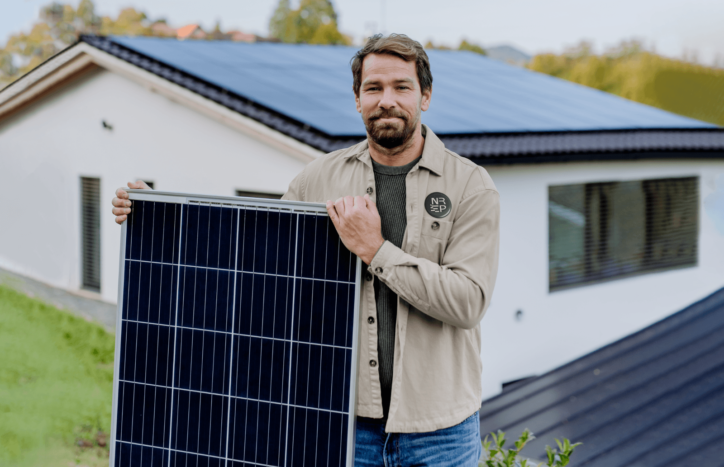Solar in Connecticut Made Easy
Connecticut might be famous for its charming and scenic landscapes, and rich history, but did you know it’s also an emerging hub for solar energy? With an increasing focus on renewable energy sources, the Nutmeg State is turning to the power of sun like never before. In this article, we’ll discuss some solar in Connecticut facts specific to the state of Connecticut.
Connecticut has been steadily growing its solar capacity over the years. Thanks to supportive state policies, incentives, and a growing awareness of climate change, more homeowners, businesses, and counties within Connecticut are turning to solar energy to power their lives. The state’s solar landscape is flourishing, thanks to rooftop solar panels and large-scale solar farms.
A huge contributing factor to this is that Connecticut’s net metering policies allow solar panel owners to receive credits for the excess electricity they generate and feed back into the grid. This means homeowners and businesses can offset their electricity bills by simply using the power of the sun. Additionally, various incentives, such as rebates, tax credits, and financing options, further encourage the adoption of solar energy across the state, making it a financially viable option for many. Find out today how NREP can help you too in switching to solar.
Despite its reputation for cloudy weather, Connecticut actually has ample solar potential. In fact, the state receives an average of over 4 hours of sunlight per day throughout the year, making it well-suited for solar energy generation. With advancements in solar technology and efficient panel designs, even partially shaded areas can be utilized for solar installations, maximizing the state’s solar capacity even further.
Embracing solar energy isn’t just about reducing electricity bills; it’s also about protecting the environment. By transitioning away from fossil fuels and towards clean, renewable energy sources like solar power, Connecticut is reducing its carbon footprint and mitigating the impacts of climate change. Solar energy helps to improve air quality, conserve water resources, and preserve natural habitats, benefitting both present and future generations.
Community solar projects are gaining traction in Connecticut, allowing residents who may not have suitable rooftops for solar panels to still participate in renewable energy generation. These initiatives enable individuals to subscribe to a shared solar installation and receive credits on their electricity bills, promoting access to clean energy for all members of the community.
With supportive policies, incentives, and a growing awareness of the importance of sustainable energy, solar power is becoming an integral part of Connecticuts energy portfolio. From reducing electricity bills to protecting the environment, the benefits of solar energy in Connecticut are undeniable.
Below we list an overview of several state incentives Connecticut offers to promote the adoption of solar energy. Some of these incentives include:
1. Residential Solar Investment Program (RSIP): The RSIP provides incentives for residential solar photovoltaic (PV) systems installed on homes in Connecticut. The program offers financial incentives based on the size of the solar PV system and its expected electricity production over the course of its lifetime.
2. Commercial Property Assessed Clean Energy (C-PACE) Program: C-PACE is a financing program that helps commercial, industrial, and nonprofit property owners access affordable, long-term financing for energy efficiency and renewable energy projects, including solar installations. This program allows property owners to finance solar projects through a special property tax assessment.
3. Connecticut Green Bank Programs: The Connecticut Green Bank offers various financing options and incentives to support solar installations for both residential and commercial properties. These programs include low-interest loans, grants, and performance-based incentives aimed at making solar energy more accessible and affordable.
4. Solarize Connecticut: Solarize Connecticut is a community-based outreach program that aims to increase the adoption of solar energy through group purchasing campaigns. By leveraging the collective purchasing power of communities, Solarize Connecticut helps homeowners and businesses secure competitive pricing for solar installations while providing educational resources and support throughout the process.
5. Renewable Energy Credits (RECs): Connecticut’s Renewable Portfolio Standard (RPS) requires electricity suppliers to generate a certain percentage of their electricity from renewable sources, including solar energy. Solar PV system owners can earn RECs for the clean electricity they produce, which can be sold to utilities or other entities to help meet their renewable energy targets.
These state incentives, along with federal incentives such as the federal Investment Tax Credit (ITC), help make solar energy more affordable and attractive for residents and businesses in Connecticut, supporting the state’s transition to a clean energy future.





